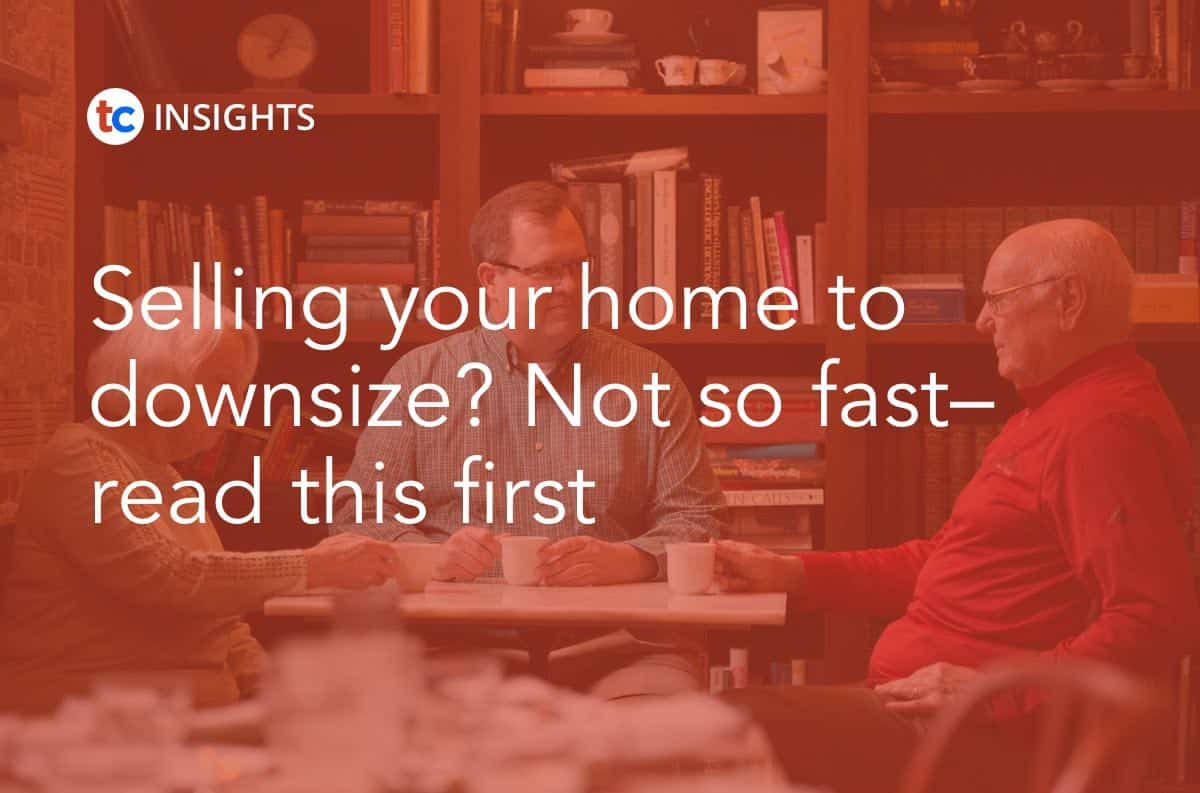Selling your home to downsize? Not so fast–read this first

Selling Your Home To Downsize? Not So Fast–Read This First Insights
To downsize or not to downsize? That’s the question many baby boomers are asking themselves these days as they approach retirement age.
Their motivations vary but often come from the same place: specifically, a single-family home in the suburbs. The boomer generation, comprised of those born just after World War II up until the mid-’60s, is land rich. But the boomers are aging.
Many, then, are selling their detached dwellings to either free up some serious cash or shirk the nagging responsibility of a maintaining low-rise housing, and the driveways, lawns, and roofs it comes with. In some cases, the motivation to downsize is a combination of both.
However, a single-family home in the Greater Toronto Area is an incredibly valuable asset, one that shouldn’t be parted with before serious thought. Once it’s gone, it’s gone. So I’m here to offer a couple of alternatives to simply selling that ground-oriented gold mine.
Use a HELOC for cash flow
Most boomers have either entirely paid off their home or else aren’t a long way from doing so. That opens up the opportunity to take advantage of a home equity line of credit, or HELOC for short. This may be the solution for you if you are mostly motivated to sell because you’d like to maintain a certain standard of living that your fixed income in your Golden Years can’t afford you.
Now, if interest rates rise substantially this option might not make as much sense, but right now the numbers can work out nicely.
For example, let’s say you want an extra $1,000 per month. Through a HELOC, you could get that at a rate of around 3% right now. You are only required to pay the interest on a HELOC, not the principal. If you did this for a year, you’d have an extra $12,000, and the interest would only work out to about $30 per month.
Extend that over a 10-year period and you’ve got $120,000, albeit including $20,000 worth of interest payments.
It might seem like you’re losing money here via bad debt, but in the GTA that doesn’t appear to be the case. That’s because a home in the Toronto area is very likely to appreciate by multiple times more than that over a 10-year period.
That “debt” you’ve racked up will be covered and then some. Best of all, you’ll still own the underlying asset that is increasing in value – your home.
Rent a condo (and your home)
Let’s say the former approach doesn’t work for you because you definitely would like to downsize, the house you live in really is too much.
There’s still no reason to sell right away. Many young families are getting priced out of the ownership market, especially in the low-rise market.
That means there is rental demand for houses in quieter residential areas. You could rent out your house and in turn rent a condo out yourself.
This option provides more flexibility than outright downsizing. You can give condo living a test run, and if you don’t like it, once your lease and your new tenants’ lease expires, you can move back to your old place.
If you do like your new abode, well, now you have a steady stream of cash to supplement your fixed income. It’s possible that your condo rent will be less than the rent you’re able to extract from your single-family home, depending on how close it is to Toronto’s core, of course.
Again, the name of the game here is to think outside the box and see if there are ways that you can enjoy a great retirement lifestyle WITHOUT selling what is probably your most valuable and profitable asset: your home.
***If you enjoyed this article, you might also enjoy listening to the podcast which it was based off. Check it out here***



